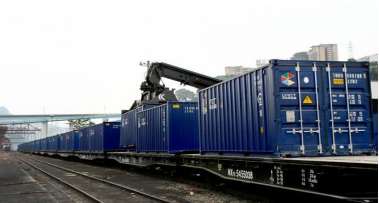Import supply chain management is a key link related to the overall operation of enterprises, involving various aspects such as procurement, transportation, warehousing, ordering and supply chain coordination. In today's era of globalization, enterprises are increasingly valuing import supply chain management and actively engaging in international cooperation on a global scale. So, let's introduce the work content of import supply chain management and its core role in enterprises together.

A. Forecasting and planning
In import supply chain management, forecasting and planning are fundamental tasks. By conducting market research and analysis, collecting various information, predicting market demand trends and the company's own situation, and formulating corresponding supply chain plans. This includes work related to supplier management, product procurement, inventory management, logistics and transportation, etc.
a. Supplier Management: Establish a supplier database, evaluate the capabilities and reputation of suppliers, negotiate and cooperate with suppliers, and ensure that suppliers can provide products that meet quality standards on time.
b. Product procurement: Develop a procurement plan, select suitable product suppliers based on market demand and inventory situation, and sign procurement contracts with them.
c. Inventory management: Ensure sufficient and reasonable inventory items, and avoid problems such as inventory backlog and stock-outs. Real time monitoring and effective allocation of inventory can be achieved through logistics technology and management methods.
d. Logistics transportation: Select suitable international logistics partners, plan import logistics routes and transportation times, and carry out transportation management and tracking to ensure that goods can arrive at their destination safely and on time.
B. Execution and Coordination
Another important aspect of supply chain management is execution and coordination. In import supply chain management, it is crucial to ensure the effective execution of various links in the supply chain and coordinate the relationships between different links.
a. Order Management: Manage customer and supplier orders to ensure accuracy and timeliness of orders. At the same time, track the progress of order execution, and promptly handle order changes and abnormal situations.
b. Coordination and Communication: Closely communicate and coordinate with suppliers, logistics companies, sales teams, and other parties to solve problems and difficulties in the supply chain, ensuring the coordinated operation of all links in supply chain.
c. Risk management: Identify potential risks in the supply chain and take corresponding measures for management and response. This includes various risks such as supplier risk, transportation risk, market risk, etc.
C. Evaluation and improvement
a. Performance evaluation: Establish a supply chain performance evaluation system, measure and evaluate performance indicators for each link in supply chain, identify problems in a timely manner, and take corresponding measures.
b. Continuous improvement: Based on the evaluation results, develop an improvement plan and track the effectiveness of the improvement. By introducing new technologies, improving processes, and enhancing personnel skills, we continuously optimize supply chain management.
Import supply chain management is a complex and important task that is related to the production and operational efficiency of enterprises. For enterprises, establishing an efficient import supply chain management system can not only improve the efficiency of supply chain operation and increase economic benefits, but also enhance their competitiveness in the market and win more market share.